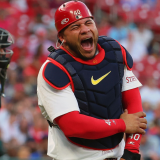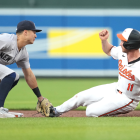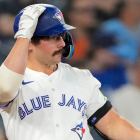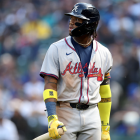Two years ago, former Marlins right-hander and current Padres closer candidate Carter Capps had one of the most dominant stretches of bullpen work in recent memory. Capps threw 30 1/3 innings around an elbow problem, and during that time he had a 1.16 ERA with a 0.81 WHIP. He struck out 58. Fifty-eight!
Capps blew out his elbow last spring and needed Tommy John surgery. He missed the entire 2016 season and the Marlins traded him to San Diego at the deadline as part of the big Andrew Cashner trade. The Padres bought low on Capps and hoped to recoup value down the road. Smart move for a rebuilding team.
Now healthy, Capps is in camp with the Padres trying to win their closer’s job. And yes, he still has his unique “hop” delivery. Check it out:
Carter Capps -- and his hop-step delivery -- are back on the mound. He'll compete for the closer role, per Andy Green. pic.twitter.com/QwohDMRwHL
— AJ Cassavell (@AJCassavell) February 15, 2017
It’s even more amazing to watch up close, isn’t it? The delivery is legal, MLB confirmed it two years ago when Capps was mowing down hitters with the Marlins, but it still doesn’t look legal.
Does that delivery help Capps? Yes, obviously. He is releasing the ball closer to home plate and thus giving the hitter less time to react. Here’s how much the hop helps:
- Average Fastball Velocity (2015): 97.9 mph
- Average Effective Fastball Velocity (2015): 101.5 mph
On average, fastballs came out of Capps’ hand at 97.9 mph. That’s hard to enough to hit as it is.
Effective velocity, which takes into account the pitcher’s extension and things like that, say his average fastball looked 101.5 mph to the hitter. That’s how much the “hop” delivery helps. It basically added 4 mph to Capps’ fastball by giving hitters less time to react.
It remains to be seen how Capps will rebound following Tommy John surgery -- the procedure has a high success rate, though it isn’t perfect -- but if he’s healthy, he could quickly re-emerge as one of the game’s most dominant relievers.






















